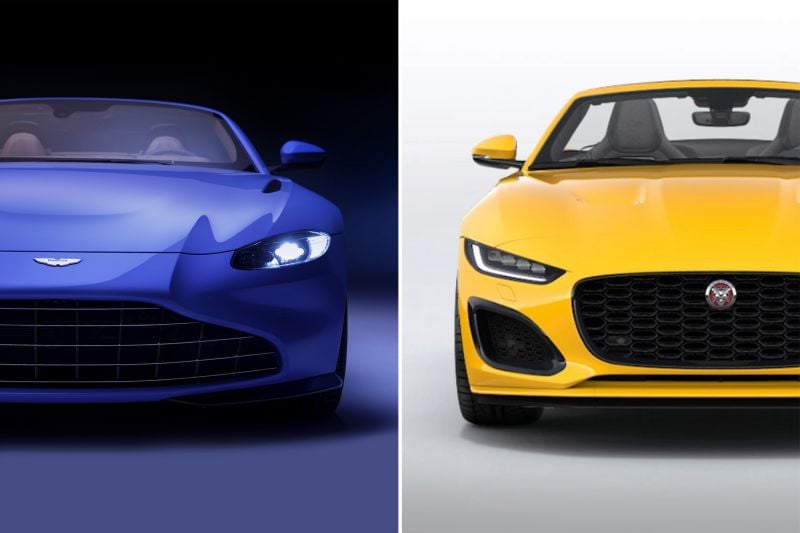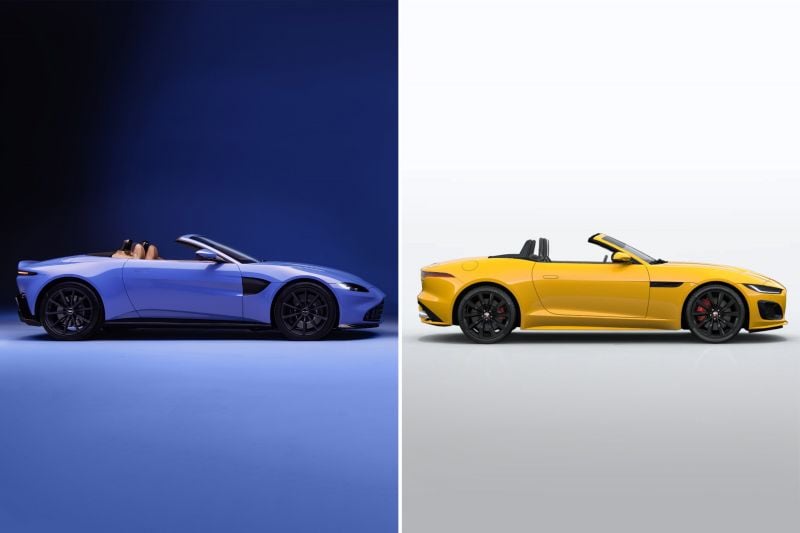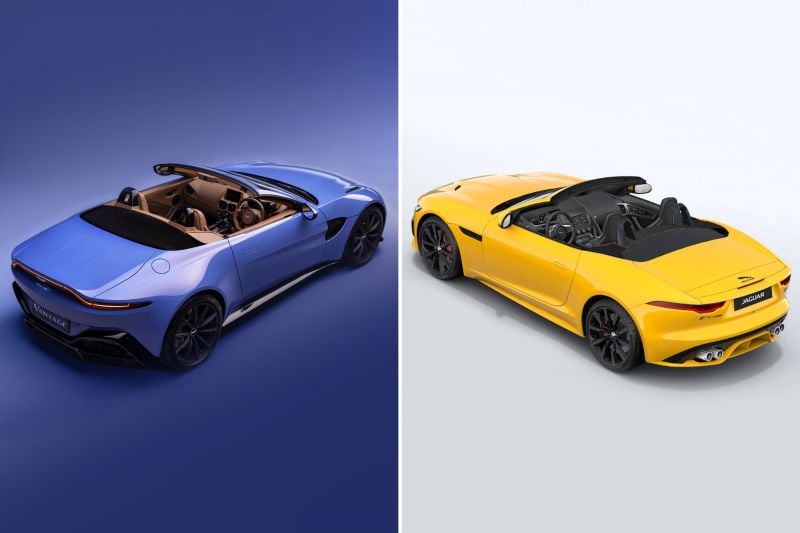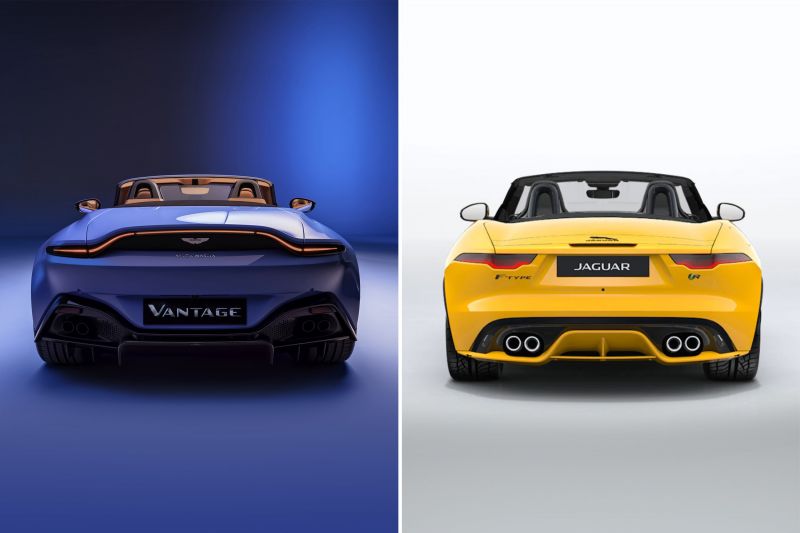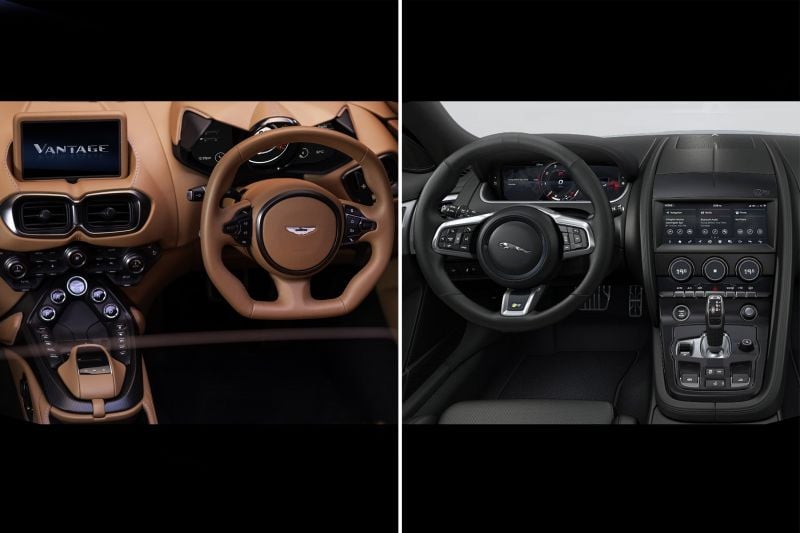We kick off our Design Battles with two soft-top sports cars from the United Kingdom.
In the left corner is the new Aston Martin Vantage Roadster and in the right, the recently-facelifted Jaguar F-Type R P575 Convertible.
There is a difference in pricing. The Aston Martin starts from $315,000 before on-road costs, compared to $263,300 before on-road costs for the range-topping Jaguar.
But both models have two seats, a retractable fabric roof and, most importantly, a roaring V8 engine under the bonnet. Here are your contenders.
Aston Martin Vantage Roadster
Unveiled in February 2020, the Vantage Roadster is based on the Vantage coupe first shown in 2017. Inspired by James Bond’s DB10, the Vantage represents a significant step for Aston Martin, which had been selling its predecessor since 2004.
Designer: Marek Reichman, Aston Martin Design Director
Engine: 4.0-litre twin-turbo V8 producing 375kW and 685Nm
Transmission: Eight-speed ZF automatic, rear-wheel drive
0-100km/h: 3.9 seconds
Top speed: 306km/h
Dimensions: 4465mm long, 1272mm tall, 1943mm wide, 2705mm wheelbase
Jaguar F-Type R P575 Convertible
Unveiled in December 2019, the updated F-Type is heavily inspired by the 2011 C-X16 concept.
The original F-Type Convertible was introduced in 2012, preceding the coupe by a year. It received a mild facelift in 2017, followed by the more significant update you see here.
Designer: Ian Callum (pre-facelift) and Julian Thomson, Jaguar Design Director
Engine: 5.0-litre supercharged V8 producing 429kW and 700Nm
Transmission: Eight-speed automatic, all-wheel drive
0-100km/h: 4.0 seconds
Top speed: 300km/h
Dimensions: 4470mm long, 1311mm tall, 1923mm wide, 2622mm wheelbase
Round 1: Front end
Aston Martin Vantage: The wide mouth-like grille occupies the largest part of the front bumper (which features a unique design compared to the coupe), dictating the main dynamic lines of the nose.
The eye-shape headlights sit on the base of the clamshell bonnet with slim air vents following the lines of the fenders and a central bulge hinting at the presence of a V8.
A two-piece aerodynamic splitter finished in glossy black provides more downforce.
Jaguar F-Type: The redesigned face is the most advertised design characteristic of the updated F-Type. The slim, aggressive pixel-LED headlights are positioned lower, pointing at the larger grille with rounded edges, and making the sculpted and vented bonnet look even longer.
A set of large intakes on the front bumper together with a more prominent splitter and the R badge on the mesh grille showcase that this is the flagship of the F-Type range.
Round 2: Profile
Aston Martin Vantage: The profile of the Vantage features sexy proportions, with 20” ten-spoke wheels, a low bonnet, short wheelbase, steeply raked windshield and pronounced rear fenders, accentuated by the tiny rear overhang.
The large side vents finished in black resemble gills, and generate the dynamic lines of the profile. The black sills and line above them bring lightness to the overall shape, enhancing the athletic stance of the car.
Jaguar F-Type: The F-Type has seen few changes to its profile since its launch, although that doesn’t make it less appealing.
Beside its balanced proportions, the most beautiful element is the sexy haunches on the rear deck of the Convertible.
Other features include a long bonnet, strong side sills, horizontal side vents, slim headlights and taillights, a pronounced rear bumper and the 20” ten-spoke wheels hiding red brake calipers.
Round 3: Rear end
Aston Martin Vantage: The rear end is the most distinctive view of the Vantage, thanks to the slim LED taillights following the characteristic shape of the upswept rear deck lid – even though this feature is less pronounced in the Roadster than in the coupe.
The large black piece of the rear bumper houses a diffuser and four round tailpipes, while surrounding the licence plate holder above it.
The electronically-operated fabric roof is stored behind the cabin, with an ultra-fast mechanism allowing it to operate in less than seven seconds.
Jaguar F-Type: Since its conception, the Jaguar F-Type has been lauded as one of the most beautiful, menacing rear-end designs among sports cars.
Thus, its designers chose to apply only small changes to the slimmer and more angular LED taillights, while the insert for the licence plate and the body-coloured diffuser between two sets of circular chrome tailpipes.
Even though the overall shape is very similar to the one we saw nine years ago on the C-X16 concept, it retains its appeal and looks more aggressive than ever.
Round 4: Interior
Aston Martin Vantage: Inside, the Vantage has shapes and volumes inspired by nature. Behind the flat-bottomed steering wheel with integrated buttons is a pair of screens flanking the digital rev counter.
The infotainment with a retractable 8.0-inch screen is sourced from Mercedes-Benz, and can be operated by a touchpad. The transmission buttons are arranged in a triangular formation, sitting below the complex climate controls and air vents finished in metal.
On the practical side, the Vantage Roadster has 200L of boot space and additional storage areas in the central tunnel and glovebox
Jaguar F-Type: The dashboard of the F-Type retains its centre console shape and a rather conventional layout.
There is a new 12.3-inch configurable digital instrument cluster behind the three-spoke steering wheel, and a 10-inch touchscreen housing the Touch Pro infotainment.
Below, we find physical knobs and switches including the climate controls, the driving profile selector, and the engine start button. A signature element is the hidden central air vents which appear only when in use, on the top of the centre console.
The F-Type has a 200L boot which is not affected by the roof mechanism.
Which do you prefer?





